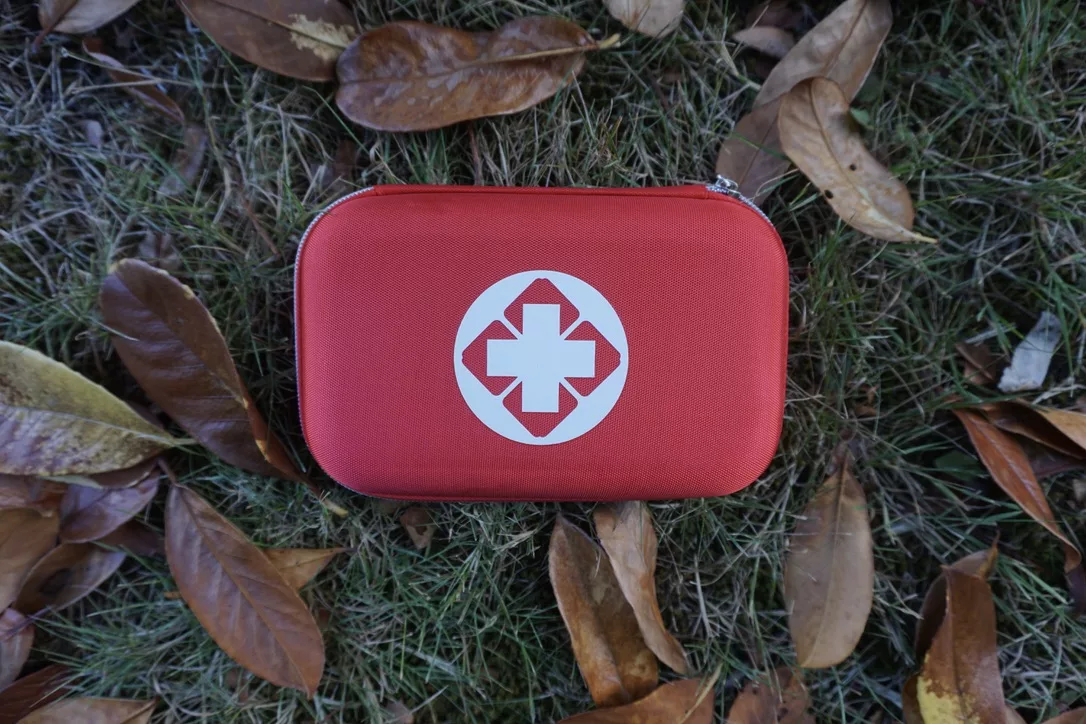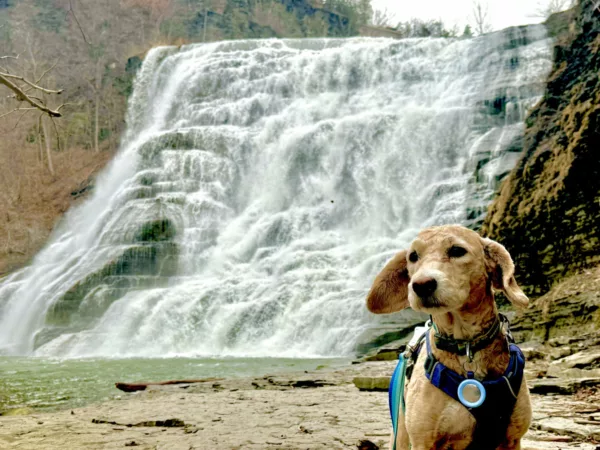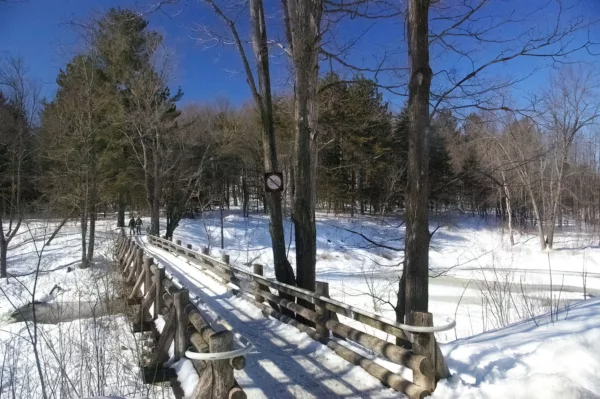What Should Be In Your Adventure Medical First-Aid Kit

Having a safety mindset is critical in the backcountry. This doesn’t mean that you don’t take any risks, but rather that you understand the dangers you may encounter during your outdoor adventure and are prepared to handle them.
Being prepared means both emergency prevention and mitigation, and the first step is having the right supplies.
 Jacqueline Salomé
Jacqueline Salomé
Here’s a list of first-aid essentials that you need in the backcountry with tips on how to customize your medical kit. Find these items in explore’s first-aid kit, available in the e-store.
First-Aid Kit Basics
 Jacqueline Salomé
Jacqueline Salomé
All of these items are included in explore’s first-aid kit.
Bandages
Plastic bandages with adhesive strips, commonly known by the brand name Band-Aids, are a first-aid kit staple—the ones everyone knows how to use. Apply them to protect your scrapes, cuts or small wounds.
Wound Cleaners: Alcohol, iodine, antiseptic and cleanser wipes
Wound cleaners help keep cuts sterile, preventing infection so that you can heal properly.
 Jacqueline Salomé
Jacqueline Salomé
Scissors
Use scissors to cut and size bandages and tape, or to remove clothing to access a wound. You’re bound to find a million and one non-medical reasons to use them, too.
 Jacqueline Salomé
Jacqueline Salomé
Emergency Whistle
Whistles are sound signals that help rescuers locate you if you’re lost or trapped somewhere. Yelling won’t cut it, as your voice will quickly become hoarse, especially if you’re dehydrated. You may want to remove this from your first-aid kit and keep it somewhere easily accessible, like the chest strap of your backpack.
 Jacqueline Salomé
Jacqueline Salomé
Emergency Blanket
An emergency blanket will keep you warm in a survival situation, whether you’re waiting for a medical evacuation, need to shelter in place or are trying to prevent hypothermia.
 Jacqueline Salomé
Jacqueline Salomé
Adhesive Wound Dressing
Adhesive, fabric-based dressings protect wounds from infection and help stop any seepage from your cut. The adhesive side means it can be stuck directly onto itself or onto your body, eliminating the need for medical tape.
Face Shield Sheet
To keep yourself safe when performing mouth-to-mouth resuscitation, place a face shield sheet between you and the other person.
 Jacqueline Salomé
Jacqueline Salomé
Triangular Bandage
Use this as an arm sling to immobilize a bone or joint injury to your limbs, or as a pad to stop heavy bleeding.
Safety Pins
Safety pins help secure non-adhesive bandages onto wounds, like your triangular bandage. As a bonus, they also come in handy for gear repairs.
 Jacqueline Salomé
Jacqueline Salomé
Elastic Bandages
Also known as compression or tensor bandages, these stretchable bandages are most often used for ankle or wrist sprains. They create localized pressure, restricting blood flow and reducing swelling. Elastic bandages might also come in handy for more serious sprains, helping you secure a splint or an ice pack.
 Jacqueline Salomé
Jacqueline Salomé
Gauze Pads
Gauze pads are also great for absorbing leakage from a wound or cleaning the affected area, protecting against infection.
Cooling Gel Patch
This multipurpose hydrogel patch helps cool you down in case of fevers, sunburns, headaches or muscle pain.
 Jacqueline Salomé
Jacqueline Salomé
Medical Tape
This multipurpose tool is handy for securing bandages and gauze pads or keeping splints and other medical devices in place.
Tweezers
Tweezers are handy for removing splinters or ticks.
 Jacqueline Salomé
Jacqueline Salomé
Cotton Swabs
Use cotton swabs to clean the skin around wounds before treating them, or to apply topical medications to a cut.
Disposable Gloves
Gloves will help you keep a wound clean and avoid cross-contamination if you’re treating someone else. They will also help keep your hands clean.
 Jacqueline Salomé
Jacqueline Salomé
Customizing Your First-Aid Kit

Add the below items depending on the sport or activity you’re doing, the number of people on your trip, the duration of your adventure and what kinds of risks or hazards you may encounter.
Emergency Contact Information
If you’re in an emergency situation, you’re going to need to make some calls—and fast. As a best practice, keep a contact card with each of your group member’s emergency contact details in your first-aid kit.
 iStock
iStock
Electrolytes/Hydration Drink Powder
These will help keep you hydrated, especially in warmer temperatures, when the risk of heat exhaustion and heat stroke becomes greater. Dehydration is both common and dangerous in the backcountry.
Blister Care
On longer, more involved trips, hikers shouldn’t take one step without some form of blister care in their bag. Pick up Moleskin, BlistWool or padded blister bandages.

Tick Remover
If you’re in a particularly tick-prone area, you may want to add a proper tick remover to your first-aid kit in addition to your tweezers. There are several tick-borne diseases that you want to avoid, including Lyme disease.
Pain Relief
Knee pain or back ache? You’ll want some ibuprofen. Pack a small bottle of pills in your first-aid kit to temper any minor aches you might feel on your adventure.
 iStock
iStock
Eye Pad
Oval-shaped eye pads can protect your eyes from further injury and decrease painful sunlight exposure when you are experiencing light sensitivity. Hold them in place with an elastic bandage. If you ski in glades or mountain bike in forests, use goggles or other eye protection.
Butterfly Bandages
These are best for closing small, shallow wounds. They also come in handy for use on body parts that adhesive bandages may have trouble sticking to, like spots with hair.
 iStock
iStock
Tourniquet
A tool to stop blood flow, tourniquets apply pressure to an injured area. There are ways to make DIY tourniquets in a pinch, but they won’t be as effective as the real thing.
SAM Splint
Use this lightweight splint to stabilize a broken or fractured bone until you can get proper medical care. It’s worth adding to your packing list for more remote trips.
EpiPen, Antihistamines and Personal Medication
If anyone in your group has serious allergies or medical needs, make sure you have allergy treatment and personal medication packed in an easy-to-locate spot in your bag for quick access.
Let’s hope you never have to use these items, but you’ll be glad they are packed if you do. Keep safe out there!














